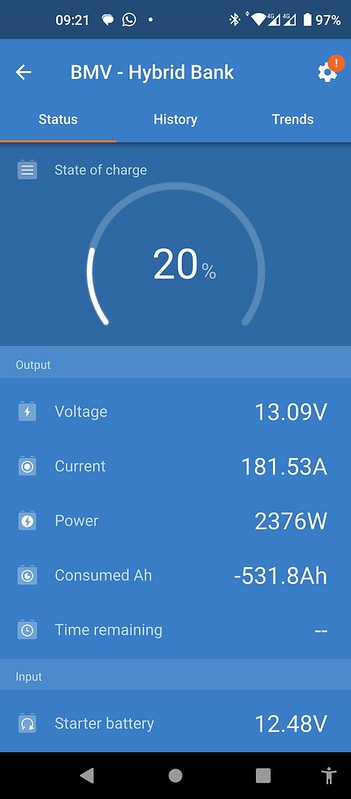wildebus
Full Member
- Messages
- 7,301
or do you need to provide some kind of current limiter to protect the alternator from potential overload?
I have a new 140A Alternator in my van, but I still wouldn't want to connect it to my Battery Bank with a relay.
My Battery Bank was pretty low this morning, so I decided to see how much I could hit it with...

Charging Battery by David, on Flickr
And that 180A is net current into the battery - the actual total current from the chargers will be higher.
This is of course a combination of Alternator and EHU charger - but if I didn't have limits on the alternator side in the form of B2Bs, it would have been happy to suck as much as it could from the Alternator, risking possible damage in the process.
That's what I would advocate a B2B rather than a relay. Just sayin'.
I have a new 140A Alternator in my van, but I still wouldn't want to connect it to my Battery Bank with a relay.
My Battery Bank was pretty low this morning, so I decided to see how much I could hit it with...

Charging Battery by David, on Flickr
And that 180A is net current into the battery - the actual total current from the chargers will be higher.
This is of course a combination of Alternator and EHU charger - but if I didn't have limits on the alternator side in the form of B2Bs, it would have been happy to suck as much as it could from the Alternator, risking possible damage in the process.
That's what I would advocate a B2B rather than a relay. Just sayin'.
